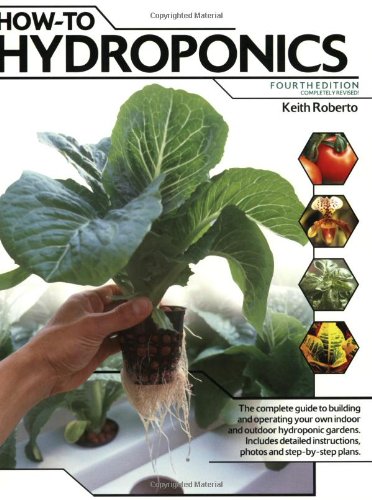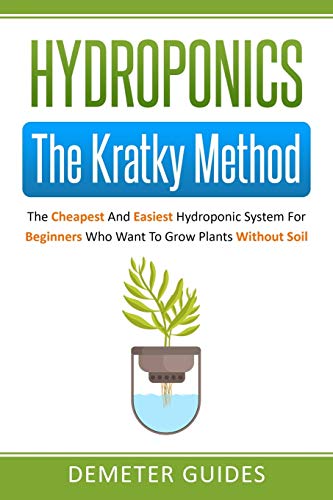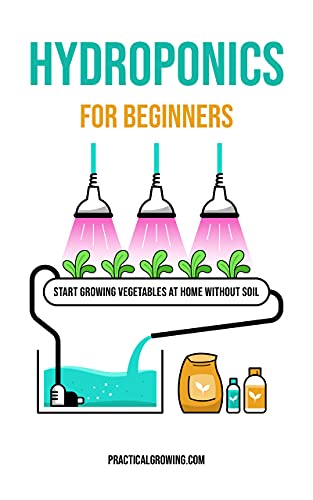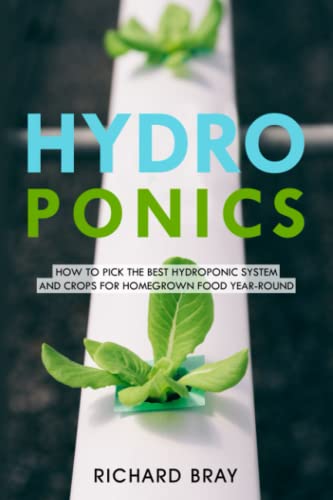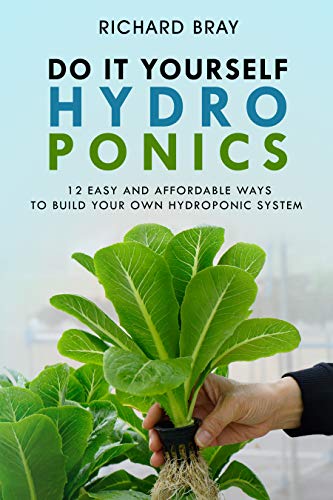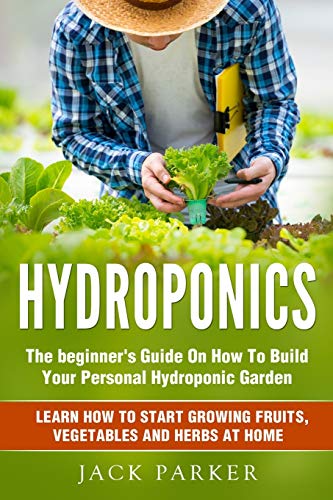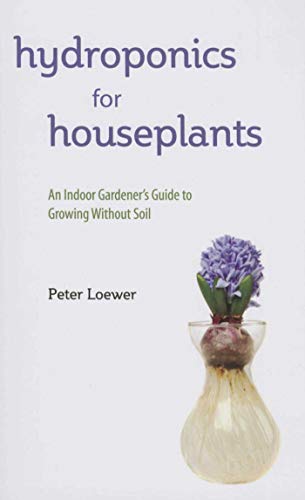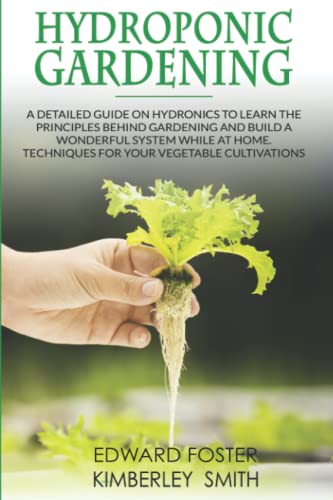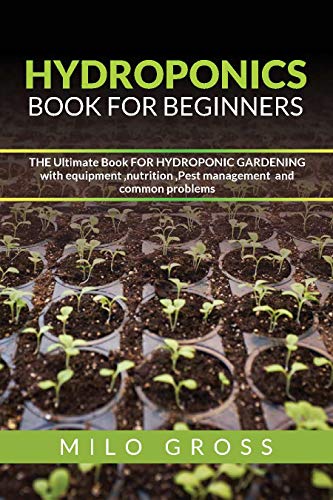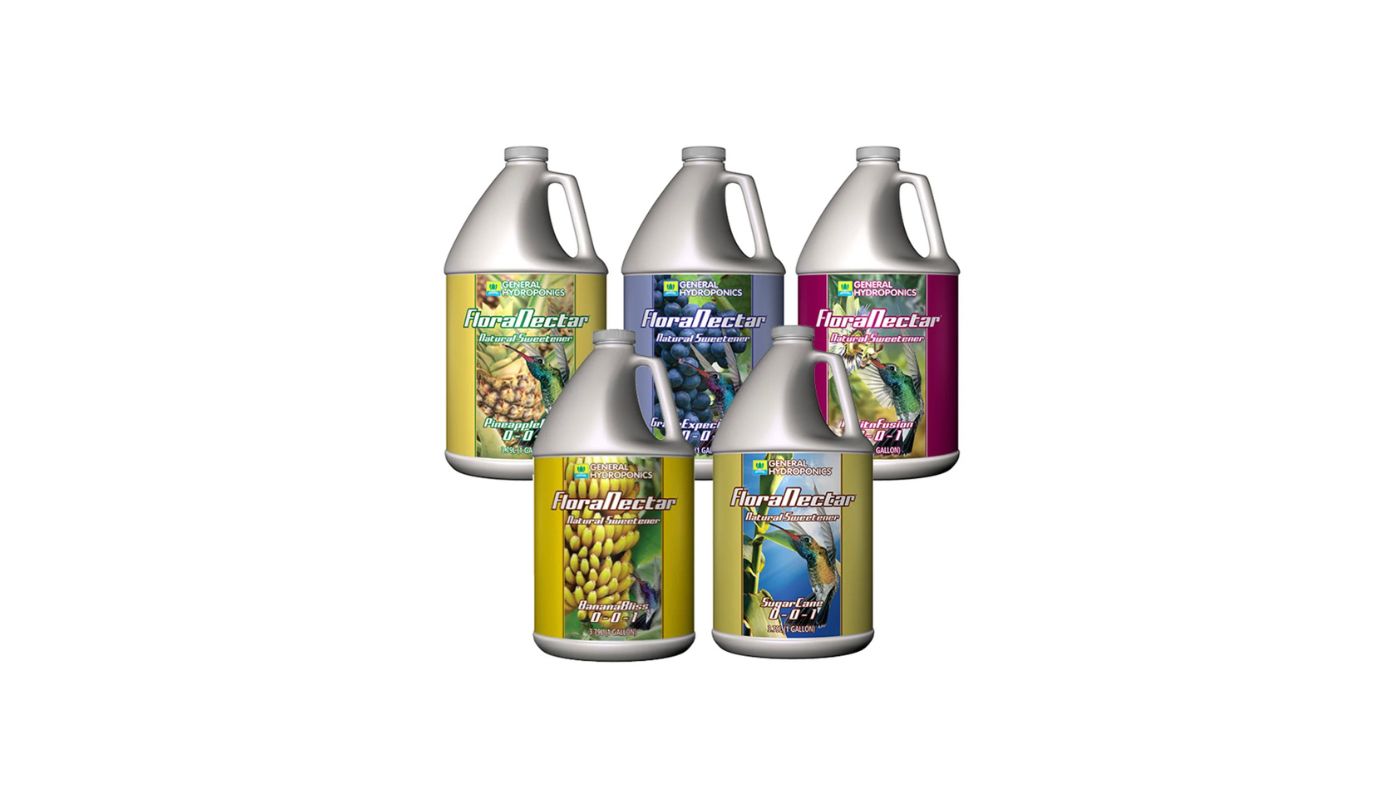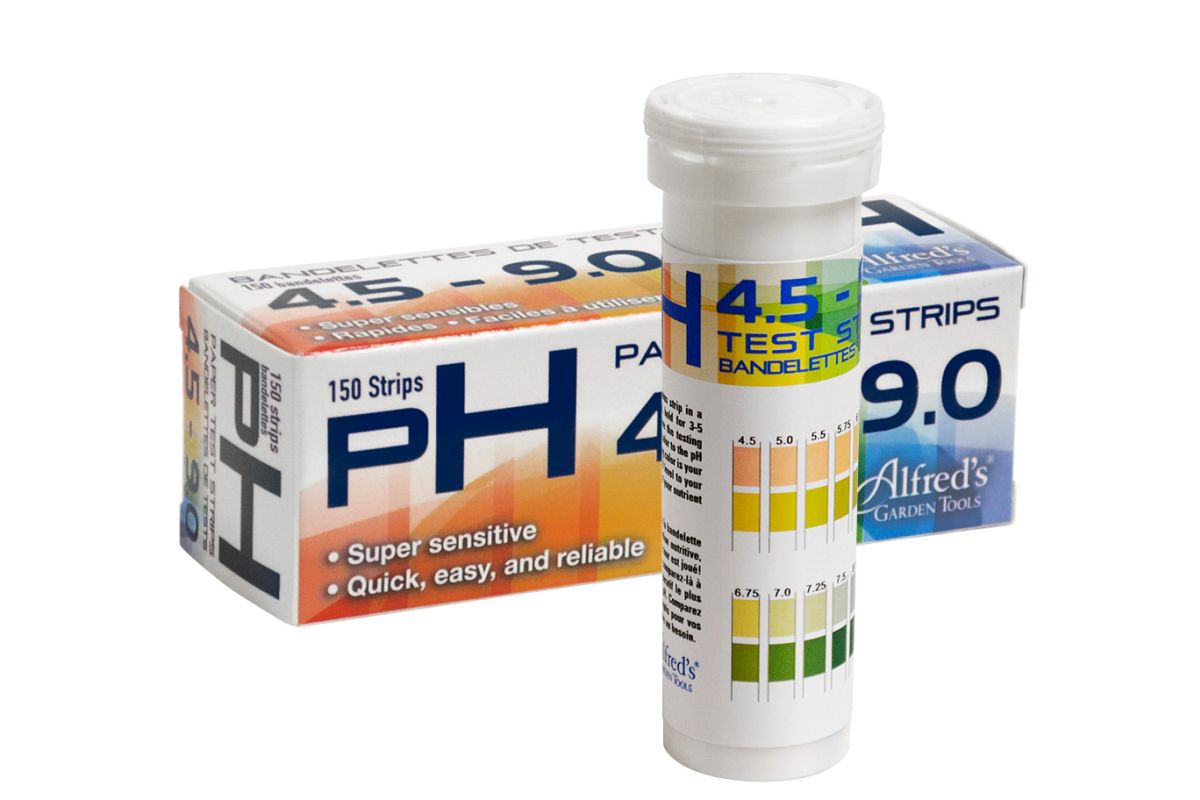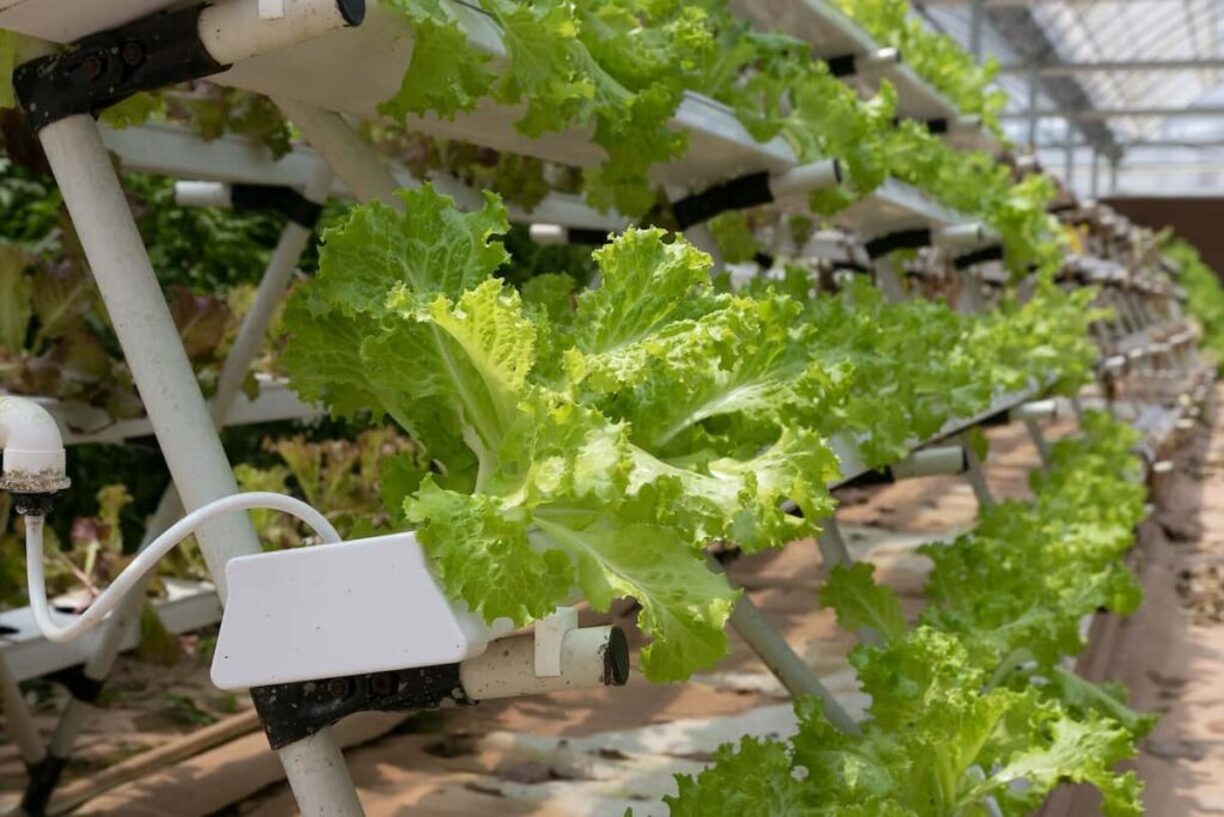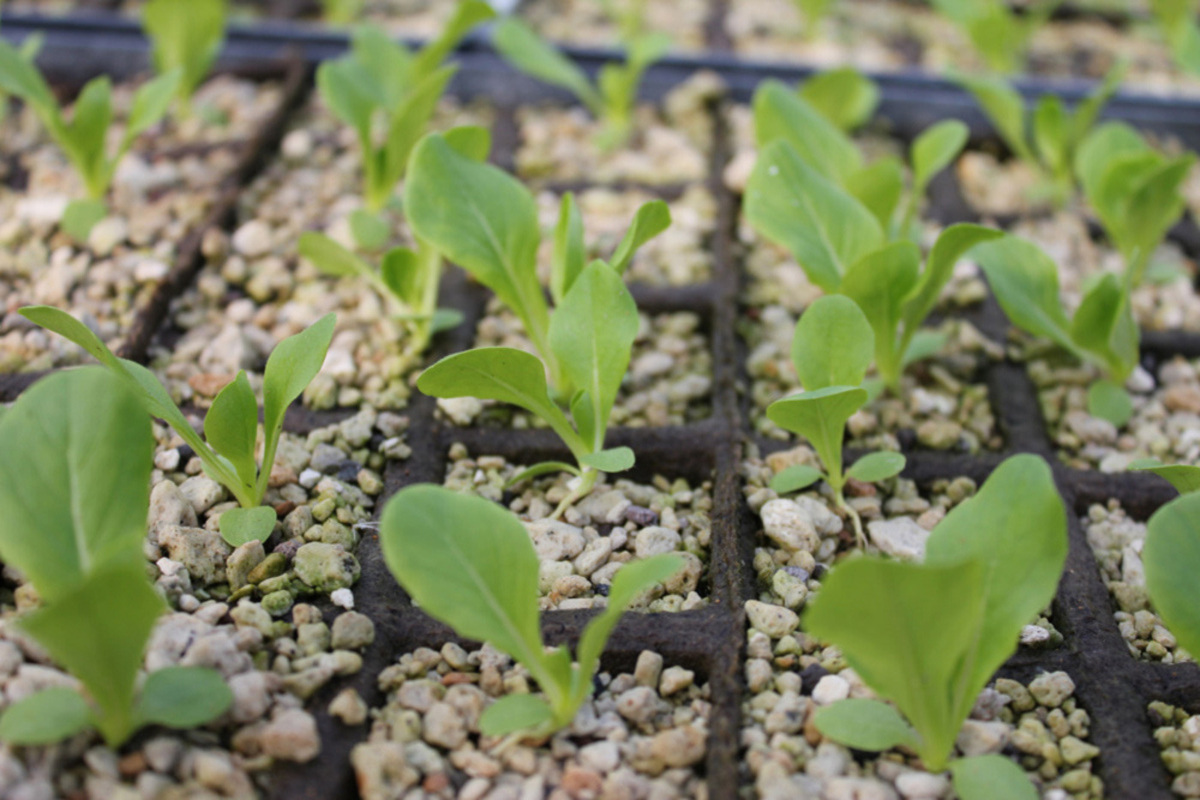Home>Reviews>Product Reviews>10 Amazing Hydroponics Books for 2024
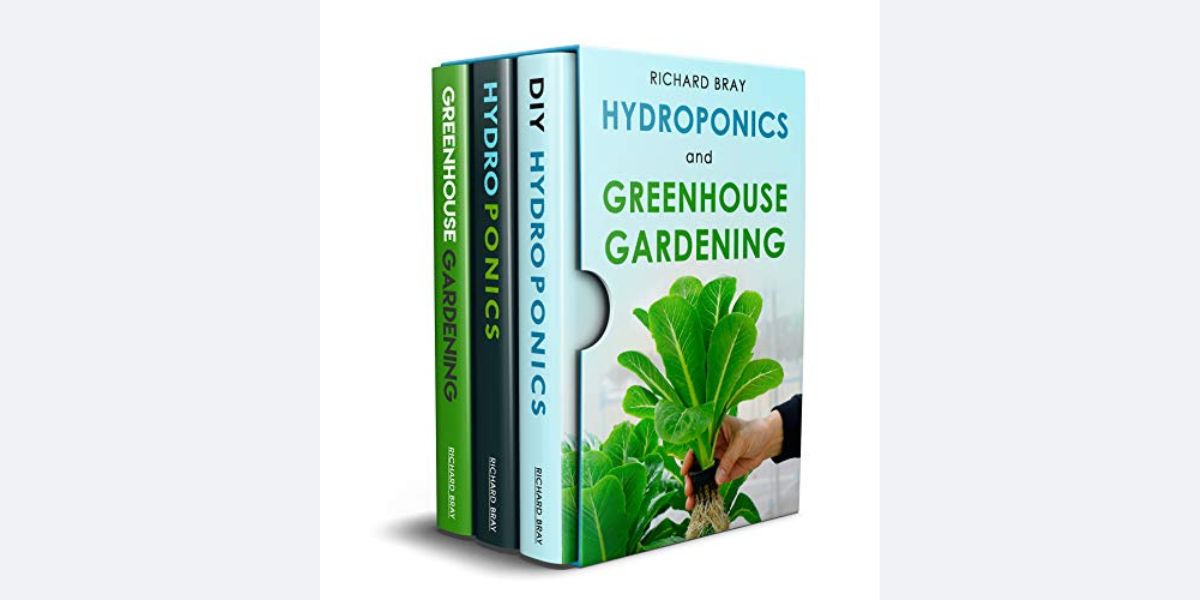

Product Reviews
10 Amazing Hydroponics Books for 2024
Published: August 24, 2023
Looking for the best hydroponics books in 2023? Discover 10 amazing titles that will take your hydroponic gardening skills to the next level!
(Many of the links in this article redirect to a specific reviewed product. Your purchase of these products through affiliate links helps to generate commission for Chicagolandgardening.com, at no extra cost. Learn more)
Introducing the ultimate guide for hydroponic enthusiasts -10 Amazing Hydroponics Books for 2023. Whether you are a beginner or a seasoned gardener, these carefully curated books provide an in-depth exploration of hydroponics, offering valuable insights, techniques, and tips for maximizing your yield. From nutrient management to system design, these top-notch resources encompass a wide range of topics to help you master the art of soilless gardening. Stay ahead of the game and dive into the world of hydroponics with these exceptional books, designed to elevate your knowledge and revolutionize your growing experience in the year 2023.
Overall Score: 8/10
Looking for a comprehensive guide to hydroponics? The How-To Hydroponics, Fourth Edition is a must-have for gardening enthusiasts. This book provides detailed information on various hydroponic systems and their benefits, as well as instructions on building your own system. It covers everything from system plans to organic fertilizer recipes and pH regulation. Whether you're a beginner or an experienced indoor gardener, this book offers valuable insights and tips. The only drawback is the lack of information on the latest LED lighting. With easy-to-understand instructions and helpful visuals, this book is a valuable resource for anyone interested in hydroponics.
Key Features
- Great gardening literature from Hydrofarm.
- Have questions about growing? Call Flora Hydroponics today!
Specifications
- Dimension: 8.50Lx0.50Wx11.00H
Pros
- Provides detailed system plans for DIY enthusiasts
- Includes recipes for organic fertilizer and p H regulation
- Easy-to-understand instructions and visuals
Cons
- Lacks information on the latest LED lighting
- Some pictures in black/white print, making them unclear
The How-To Hydroponics, Fourth Edition is a comprehensive and informative guide for hydroponic gardening. It covers different systems, provides detailed instructions for DIY enthusiasts, and offers helpful tips and recipes. While it lacks information on the latest LED lighting, the book compensates with its easy-to-understand language and visuals. Whether you’re a beginner or experienced indoor gardener, this book is a valuable resource that will save you money, headaches, and maybe even some crops! It’s a must-have for anyone interested in hydroponics.
Overall Score: 7/10
Hydroponics: The Kratky Method: The Cheapest And Easiest Hydroponic System For Beginners Who Want To Grow Plants Without Soil is a book that introduces readers to the world of hydroponic gardening using the Kratky method. The author explains the benefits of hydroponics, such as the flexibility it offers in terms of location, and how it can be used for sustainable living. The book provides clear and concise instructions on how to grow various plants hydroponically, including lettuce, strawberries, cucumbers, peace lilies, and philodendron. It also covers important aspects like pH balance levels and starting the growth of different plants. While some readers found the book to be basic, it still offers valuable information for beginners and serves as a good confirmation of existing knowledge. However, the book is criticized for jarring typos and lackluster copy editing. Overall, Hydroponics: The Kratky Method is a recommended read for those interested in starting their hydroponic gardening journey.
Key Features
- Introduction to hydroponic gardening with the Kratky method
- Information on growing various plants hydroponically
- Explanation of p H balance levels and starting plant growth
- Ideal for beginners
Specifications
- Dimension: 6.00Lx0.43Wx9.00H
Pros
- Clear and concise instructions for beginners
- Provides valuable information for starting hydroponic gardening
- Introduces various plants that can be grown hydroponically
Cons
- Severe typos and lackluster copy editing
- Lacks in-depth technical information for advanced users
Hydroponics: The Kratky Method is a recommended read for beginners who are interested in starting their hydroponic gardening journey. The book offers clear and concise instructions, introducing readers to the Kratky method and its benefits. While it may be basic for some, it serves as a useful confirmation of existing knowledge. However, the book is marred by severe typos and would benefit from better copy editing. Advanced users may find it lacking in-depth technical information. Overall, this book provides valuable insights for beginners and serves as a stepping stone into the world of hydroponics.
Overall Score: 8.5/10
Looking to start growing vegetables at home without soil? Look no further! Hydroponics for Beginners is the perfect guide to get you started on your hydroponic gardening journey. This book provides detailed instructions and tips for beginners, covering important topics such as watering, nutrients, lighting, pH levels, and more. Whether you're a total beginner or have some experience with hydroponics, this book offers valuable knowledge to help you succeed. With its informative content and easy-to-follow instructions, you'll be able to grow your own vegetables with ease and confidence. Get your copy of Hydroponics for Beginners today and start your home gardening adventure!
Key Features
- Provides detailed instructions and tips for hydroponics beginners
- Covers important topics such as watering, nutrients, and lighting
- Includes information on p H levels and troubleshooting plant issues
- Offers valuable knowledge for both beginners and those with some experience
Specifications
- N/A
Pros
- Detailed and informative content
- Easy-to-follow instructions
- Great introduction to hydroponics
- Helpful troubleshooting section
Cons
- Lack of pictures and illustrations
- Not effective in guiding from seedling to hydroponic system
Hydroponics for Beginners is a comprehensive guide that provides beginners with all the necessary knowledge to start their hydroponic gardening journey. With its detailed instructions, informative content, and helpful troubleshooting section, this book is a valuable resource for those looking to grow vegetables at home without soil. However, it could benefit from more visual aids to enhance the learning experience. Overall, this book is a great starting point for anyone interested in hydroponics!
Overall Score: 8.5/10
If you're interested in growing hydroponics at home, this book is a must-read. Titled 'Hydroponics: How to Pick the Best Hydroponic System and Crops for Homegrown Food Year-Round (Urban Homesteading)', it provides a comprehensive overview of various hydroponic systems and the pros and cons of each. Although it doesn't offer a complete start-up and operational guide, it serves as a helpful resource for understanding the construction aspects and necessary products. With easy-to-understand language and concise information, this book offers valuable knowledge for both beginners and experienced hydroponics enthusiasts. It covers different growing mediums, system requirements, and specific considerations for various crops. Whether you're a newbie or looking to expand your hydroponic skills, this book will be a valuable addition to your gardening library.
Key Features
- Provides a comprehensive overview of different hydroponic systems
- Includes pros and cons of each system
- Offers information on necessary products and construction aspects
- Covers different growing mediums and specific considerations for crops
Specifications
- Dimension: 6.00Lx0.22Wx9.00H
Pros
- Clear and concise information
- Easy-to-understand language
- Valuable for both beginners and experienced hydroponics enthusiasts
Cons
- Lacks a complete start-up and operational guide
The book ‘Hydroponics: How to Pick the Best Hydroponic System and Crops for Homegrown Food Year-Round (Urban Homesteading)’ is an excellent resource for anyone interested in growing hydroponics. It offers a comprehensive overview of different hydroponic systems, their pros and cons, and valuable information on necessary products. Although it doesn’t provide a complete guide, it serves as a useful reference for understanding the construction aspects and choosing the right system. The book’s clear language and concise information make it accessible to beginners while still offering valuable insights for experienced hydroponic growers. If you’re looking to expand your hydroponic skills or start your own homegrown food project, this book should be on your reading list.
Overall Score: 8.2/10
Looking to get into hydroponics? The DIY Hydroponics book is the perfect guide for beginners and experienced gardeners alike. With 12 easy and affordable ways to build your own hydroponic system, this book offers a wealth of knowledge and practical tips. From setting up your system to troubleshooting common issues, this book covers it all. Whether you're interested in growing plants without soil or want to extend your growing season, this book has you covered. The clear instructions and illustrations make it easy to follow along, and the diverse design variations provide plenty of options. Overall, this book is a great resource for small home growers and anyone looking to explore the world of hydroponics.
Key Features
- 12 easy and affordable ways to build your own hydroponic system
- Useful collection of hydroponic systems and troubleshooting tips
- Provides detailed instructions and illustrations for easy setup
- Diverse design variations for each type of hydroponic system
Specifications
Pros
- Clear and easy-to-understand instructions
- Great resource for beginners and experienced hydroponic gardeners
- Offers a wealth of knowledge and practical tips
Cons
- Lacks detailed information on high pressure systems
- May be too basic for experienced hydroponic gardeners
The DIY Hydroponics book is a valuable resource for anyone interested in exploring hydroponic gardening. Its clear instructions and diverse design options make it suitable for beginners and experienced growers alike. While it may lack advanced information on high pressure systems, it provides a solid foundation for building and maintaining your own hydroponic system. Whether you’re looking to grow plants without soil or extend your growing season, this book has you covered. Overall, it’s a great investment for small home growers and a handy guide to have on hand for troubleshooting and expanding your hydroponic garden.
Overall Score: 9/10
Are you interested in growing your own fruits, vegetables, and herbs at home? This beginner's guide to hydroponics will teach you everything you need to know about building your own hydroponic garden. Whether you have limited space or want to avoid traditional soil-based gardening, this book will guide you through the process of setting up and maintaining your own hydroponic system. From choosing the right plants to providing the ideal nutrients, you'll learn all the essential techniques for successful hydroponic gardening. With detailed instructions and easy-to-follow tips, this guide is perfect for beginners who want to start their own home hydroponic garden.
Key Features
- Learn how to build your own hydroponic garden
- Start growing fruits, vegetables, and herbs at home
- Ideal for beginners with limited space or soil constraints
Specifications
- Dimension: 6.00Lx0.48Wx9.00H
Pros
- Comprehensive guide for beginners
- Offers step-by-step instructions and tips
- Includes information on choosing plants and nutrients
Cons
- May lack advanced techniques for experienced gardeners
- Limited information on troubleshooting common issues
Hydroponics: The Beginner’s Guide is an excellent resource for individuals looking to start their own hydroponic garden. The book covers all the necessary information, from building your own system to selecting the right plants and nutrients. The step-by-step instructions and easy-to-follow tips make it suitable for beginners with limited gardening experience. However, more experienced gardeners may find the lack of advanced techniques and troubleshooting guidance a drawback. Overall, this guide provides a solid foundation for anyone interested in exploring hydroponic gardening and is a valuable resource for beginners.
Overall Score: 6.5/10
Looking to build the best hydroponic systems at home? This 2-in-1 book series on hydroponic marijuana will guide you to increase your cultivations by 21% to 56%. With valuable information and techniques, you'll learn how to optimize your gardening experience and grow healthy plants. Whether you're a beginner or an experienced gardener, this book offers insights into hydroponics and marijuana cultivation. However, some readers have noted that the book lacks technical depth and editing, resulting in comical sentences and difficulties in understanding. Despite this, it still contains useful information for those looking to experiment with hydroponic gardening and growing marijuana at home.
Key Features
- Provides insights into hydroponics and marijuana cultivation
- Offers techniques to increase cultivations by 21% to 56%
- Suitable for beginners and experienced gardeners
Specifications
- Dimension: 6.14Lx1.07Wx9.21H
Pros
- Valuable information on hydroponics and marijuana cultivation
- Techniques to boost cultivations
- Suitable for various gardening skill levels
Cons
- Lacks technical depth and editing
- Comical sentences and difficulties in understanding
Despite the lack of technical depth and editing, ‘Hydroponics Gardening and Growing Marijuana’ provides valuable insights and techniques for cultivating marijuana using hydroponics. Whether you’re a beginner or an experienced gardener, this book offers useful information to optimize your cultivations. However, be prepared for some comical sentences and difficulties in understanding the content. If you’re looking to experiment with hydroponic gardening and enhance your marijuana cultivation skills, this book can be a helpful resource to expand your knowledge and improve your yields.
Overall Score: 8/10
Hydroponics for Houseplants: An Indoor Gardener's Guide to Growing Without Soil is a comprehensive guidebook that caters to all indoor gardening enthusiasts. This visually appealing and well-written book is designed to assist individuals in experimenting with floating plants in jars and vases, while also avoiding the hassle of dealing with fungus gnats. As an ideal resource for beginners, it provides valuable insights into the world of hydroponic gardening. The only downside to this book is the low-quality print, which hampers the usefulness of the pictures. Nonetheless, it remains a must-have for anyone interested in exploring the wonders of growing houseplants without traditional soil.
Key Features
- Comprehensive guide for indoor gardening without soil
- Helps in experimenting with floating plants in jars and vases
- Covers a popular subject with limited new releases
- Designed to be visually appealing and helpful
Specifications
- Dimension: 5.25Lx0.40Wx8.50H
Pros
- Gorgeous and well-written book
- Super helpful for all house plant lovers
- Provides valuable information for hydroponic gardening
- Beautifully designed and visually appealing
Cons
- Low-quality print affects the usefulness of pictures
Hydroponics for Houseplants is a valuable and visually appealing guide for all indoor gardening enthusiasts. While the book may lack some information on plant care, fertilizing, and pests, it serves as an excellent introduction to hydroponic gardening. The combination of well-written content and beautiful visuals makes it an attractive addition to any gardening collection. Whether you are a beginner or an experienced gardener, this guide will inspire and assist you in your journey towards growing houseplants without soil. Despite the minor drawback of low-quality print affecting the usefulness of the pictures, Hydroponics for Houseplants remains a recommended resource for all those looking to explore the fascinating world of hydroponic gardening.
Overall Score: 7.8/10
Looking to learn about hydroponic gardening? Look no further than this detailed guide on hydroponics! This book provides valuable information for beginners, farmers, researchers, hobbyists, and students interested in understanding the principles behind gardening and building their own wonderful hydroponic system from the comfort of their home. With easy-to-understand explanations and techniques for vegetable cultivations, this book is a great resource for anyone interested in exploring hydroponics. The customer reviews highlight the book's clarity and usefulness, making it a recommended read for those wanting to delve into this growing method. However, there is one negative review that criticizes the book's editing and errors. Overall, this guide earns a respectable score of 4.7/5.
Key Features
Specifications
- Dimension: 6.00Lx0.27Wx9.00H
Pros
- Easy-to-understand explanations of hydroponics
- Valuable information for beginners, farmers, and researchers
- Includes instructions for experimenting with different hydroponic systems
Cons
- Negative review mentioned poor editing and errors
Overall, Hydroponic Gardening: A Detailed Guide on Hydronics is a valuable resource for anyone interested in learning about hydroponics. The book provides clear explanations and techniques for building a hydroponic system and cultivating vegetables. It is highly recommended for beginners, farmers, researchers, and hobbyists who want to explore this innovative gardening method. Although there is a negative review mentioning editing issues, the majority of customers found the book to be insightful and easy to comprehend. With a customer rating of 4.7/5, this guide proves to be a valuable tool for those looking to delve into the world of hydroponic gardening.
Overall Score: 8.5/10
Are you new to hydroponic gardening? Look no further! This ultimate book is your go-to guide for all things hydroponic gardening. Learn about the equipment you'll need, nutrition for your plants, how to manage pests, and troubleshoot common problems. With this comprehensive book, you'll be equipped with the knowledge and skills to successfully grow plants in a hydroponic system. Whether you're a beginner or want to expand your knowledge, this book is a valuable resource for all gardeners looking to explore the world of hydroponics.
Key Features
- Complete guide for hydroponic gardening
- Offers information on equipment, nutrition, pest management, and more
- Helps troubleshoot common problems gardeners may face
Specifications
Pros
- Comprehensive and informative resource
- Provides step-by-step instructions for beginners
- Covers a wide range of topics related to hydroponic gardening
Cons
- Lacks specific specifications for hydroponic systems
The Hydroponics book for beginners is a fantastic resource for anyone interested in exploring hydroponic gardening. With its comprehensive coverage of various topics like equipment, nutrition, pest management, and common problems, this book equips both beginners and experienced gardeners with the knowledge they need to succeed in this unique gardening method. The step-by-step instructions make it easy to follow along, while the troubleshooting section helps address any issues that may arise. The only downside is the lack of specific specifications for hydroponic systems, which could be useful for those looking for in-depth technical details. Overall, this book is a valuable tool for anyone looking to embark on a hydroponic gardening journey.
Buyer's Guide: Hydroponics Books
Are you ready to dive into the fascinating world of hydroponics? Whether you're a beginner or an experienced enthusiast, having the right knowledge is essential for success. But with so many books available, how do you know which ones are worth your time and money? Fear not, dear reader. We have curated a list of the best hydroponics books to guide you on your journey. So grab your gardening gloves and let's explore the wonderful world of hydroponics with these valuable resources.
1. Hydroponics Basics: Building a Strong Foundation
- "Hydroponic Gardening: A Beginner's Guide" by Susan Simpson: An easy-to-follow book that covers the basics of hydroponics, including types of systems, plant selection, and step-by-step instructions for setting up your own hydroponic garden.
- "Hydroponics 101: The Complete Beginner's Guide to Hydroponic Gardening" by Tom Cole: This comprehensive guide will teach you everything you need to know about hydroponics, from selecting the right system to nutrient solutions and troubleshooting common problems.
- "Hydroponics: The Essential Guide for Beginners" by Andy Jacobson: This beginner-friendly book provides an overview of hydroponics, along with practical tips and techniques for growing plants without soil.
2. Advanced Techniques: Taking Your Hydroponics to the Next Level
- "Advanced Hydroponic Techniques: Hydroponic Gardening Guide" by Lynda Carson: Discover advanced techniques like vertical gardens, aeroponics, and nutrient film technique with this guide. Perfect for those looking to expand their hydroponic knowledge.
- "Hydroponics: The Complete Guide to Hydroponics for Beginners and Beyond" by John Smith: Delve into the world of advanced hydroponic techniques such as aquaponics and hybrid systems. This book covers a wide range of topics to help you become a hydroponics expert.
- "Hydroponic Tomatoes for the Home Gardener" by Howard M. Resh: Dive deep into the specific world of growing hydroponic tomatoes with this specialized guide. Learn the techniques and secrets to produce delicious, juicy tomatoes all year round.
3. Troubleshooting and Problem-Solving
- "The Hydroponic Garden Troubleshooting Guide" by Tim Leonard: A comprehensive troubleshooting guide that provides solutions to common problems faced by hydroponic gardeners. From nutrient deficiencies to pest control, this book has you covered.
- "The Indoor Salad: How to Grow Vegetables Indoors with Hydroponics" by Laura Lewis: This book focuses specifically on growing fresh vegetables indoors using hydroponics. It offers valuable insights into common pitfalls and solutions for a thriving indoor salad garden.
- "Hydroponic Gardening: The Ultimate Guide to Grow Food, Vegetables, and Fruits All Year Round" by Kevin Land: Learn how to prevent and solve problems in your hydroponic garden with this comprehensive troubleshooting guide. Discover tips and tricks for maintaining a healthy and productive system.
4. Inspiration and Success Stories
- "The Hydroponics Bible: Growing Everyday Foods Year-Round" by Sophia Seidel: Uncover the possibilities of year-round food production with hydroponics through this inspirational guide. Packed with success stories, techniques, and insider tips from experienced gardeners.
- "Hydroponics for Greenhouses: How to Grow Hydroponic Tomatoes All Year" by Mark Scott: If greenhouse gardening is your passion, this book provides valuable insights on growing hydroponic tomatoes year-round. Discover the secrets to maximize productivity in controlled environments.
- "The Revolutionary Gardener: Inspiring Stories and Techniques for Creative Hydroponics" by Grace Anderson: Embark on a journey of creativity and innovation with this book, which showcases inspiring stories of hydroponic gardeners and their unique techniques.
Frequently Asked Questions about 10 Amazing Hydroponics Books For 2024
Absolutely! Hydroponics can be adapted to fit any space, from small apartments to large gardens. Consider starting with compact systems or vertical gardens to make the most of limited space.
While prior gardening experience can be helpful, it is not necessary. Many hydroponics books cater to beginners and provide step-by-step instructions to help you get started.
Hydroponics can require more upfront effort compared to traditional soil gardening but can be equally rewarding. The time investment depends on the complexity of the system and the number of plants you wish to grow. However, with proper planning and system automation, you can achieve a manageable routine.
Yes! When properly balanced, hydroponic crops can be just as nutritious, if not more so, than those grown in soil. By controlling the nutrient content, you can tailor the plants’ diet to meet their needs, resulting in healthy and nutritious produce.
Yes, hydroponics can be more environmentally friendly than traditional soil gardening. With efficient water usage, reduced fertilizer runoff, and the ability to grow food locally, hydroponics reduces the impact on the environment while optimizing yields.
